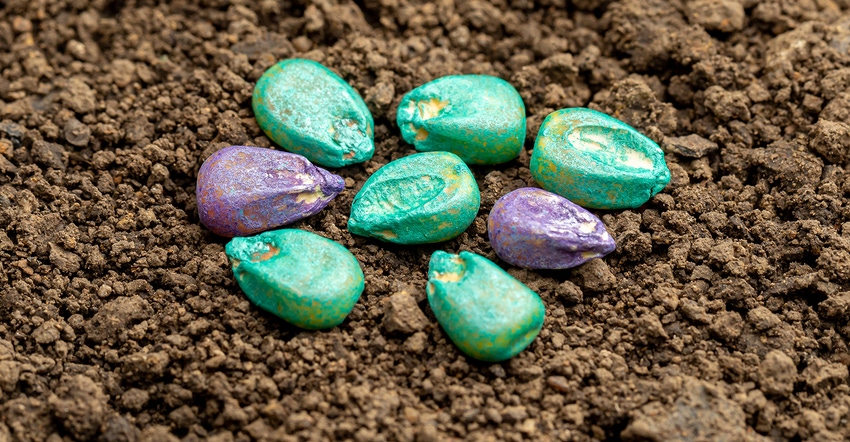
This year’s crop progress reports from USDA are starting to get a little more interesting as the agency has more data to share on corn and soybean plantings, winter wheat quality ratings and much more. The latest report, out Monday morning and covering the week through April 17, offered further confirmation of what many had already suspected – that rainy weather in the Midwest has meant a slow start to the 2022 season.
Corn plantings were at 4% through Sunday, up from 2% a week earlier. Analysts were expecting a slightly better pace, with an average trade guess of 5%. It was also below 2021’s pace of 7% and the prior five-year average of 6%. The top three states that have made the most progress so far include Texas (64%), North Carolina (39%) and Kansas (12%).
Soybean plantings are also off to a bit of a sluggish start, with 1% progress nationwide. That’s slower than analysts expected, who had offered an average trade guess of 2%. Last year’s pace was 3%, and the prior five-year average was 2%. The three states that have made the most inroads so far include Louisiana (23%), Mississippi (10%) and Arkansas (8%).
USDA noted planting progress for some additional crops, including cotton (10%), sorghum (17%), rice (22%), peanuts (2%), sugarbeets (7%) and spring wheat (8%).
The winter wheat crop was planted months ago, meantime, and USDA continues to update quality ratings. Surprisingly, the agency trimmed ratings by two points this week, with just 30% rated in good-to-excellent condition. Analysts were expecting a one-point increase, in contrast. Another 33% of the crop is rated fair (up one point from last week), with the remaining 37% rated poor or very poor (also up one point from last week).
Physiologically, 7% of the crop is headed through Sunday, up from 5% the prior week. That’s slower than both 2021’s pace of 9% and the prior five-year average of 12%.
Click here to learn more about the latest USDA crop progress report, including the agency’s observations on days suitable for fieldwork and topsoil moisture conditions.
About the Author(s)
You May Also Like






